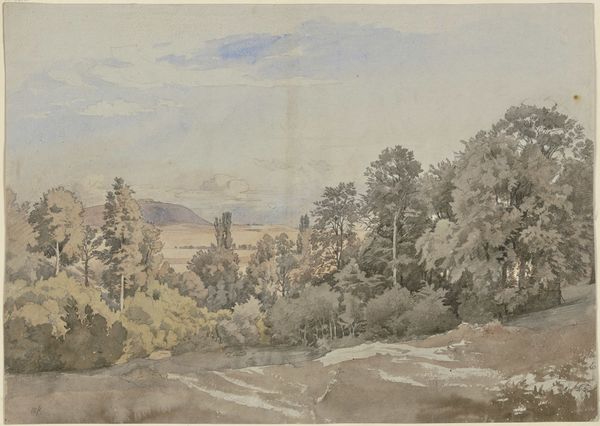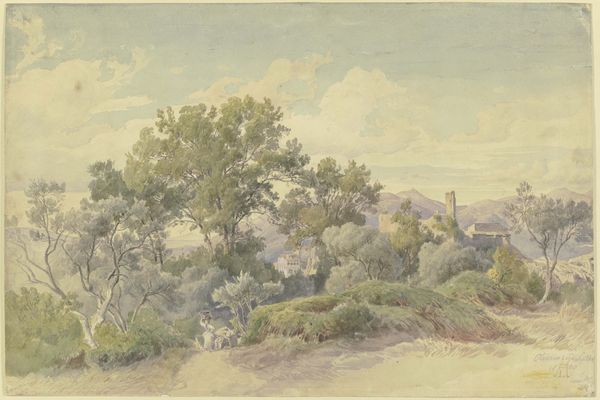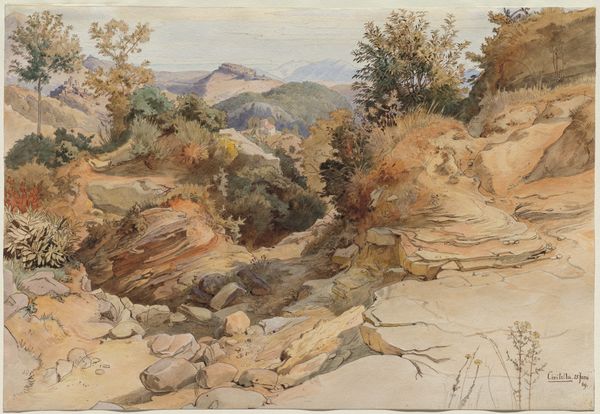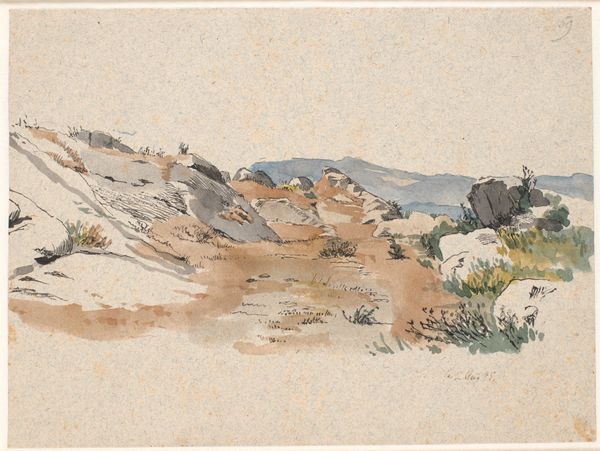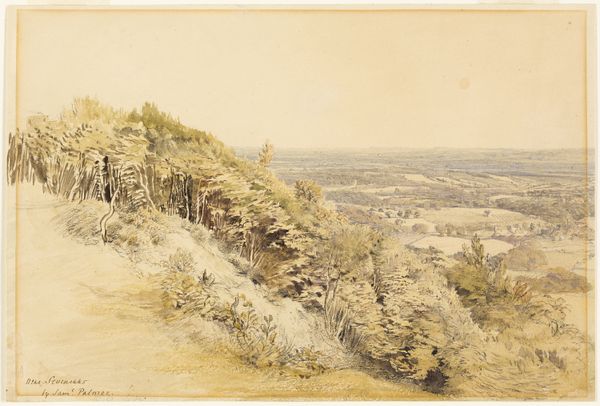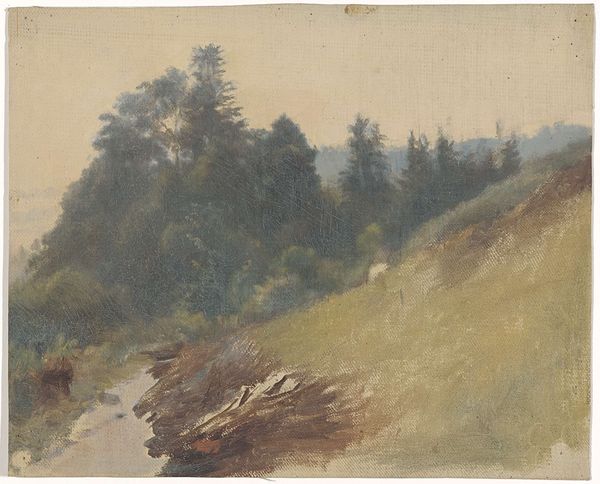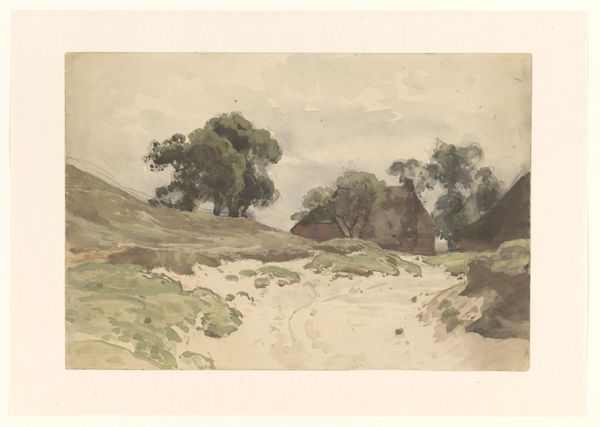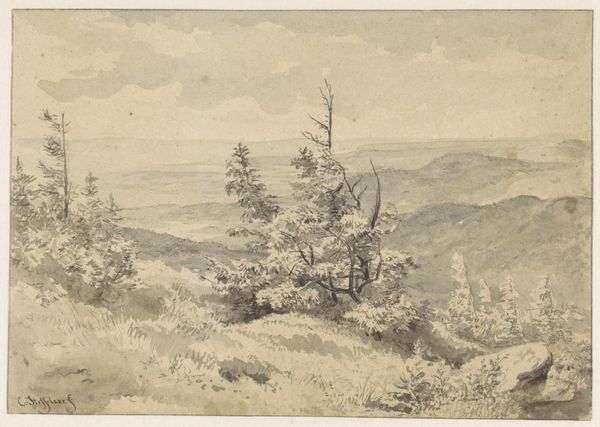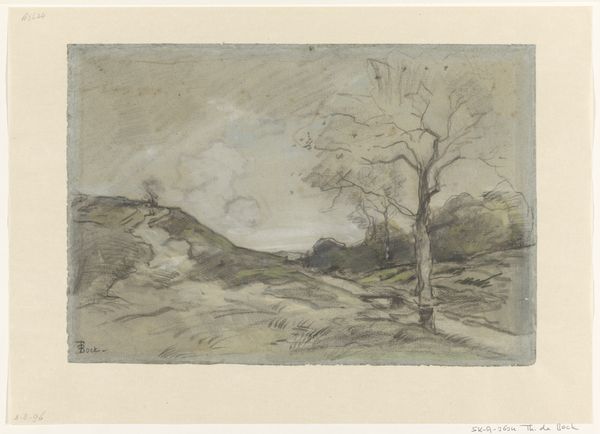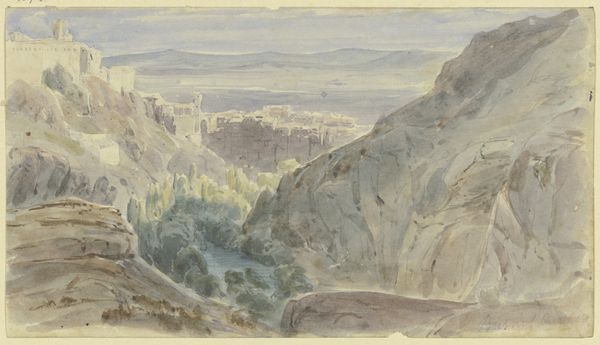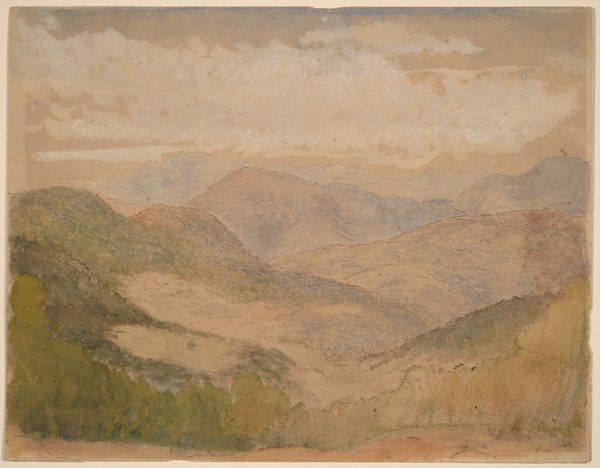
Dimensions: sheet: 30.4 x 47.3 cm (11 15/16 x 18 5/8 in.)
Copyright: National Gallery of Art: CC0 1.0
Curator: Here we have Carl Wilhelm Müller’s "Sun and Rain in the Serpentara near Olevano", created in 1866. It’s a watercolour drawing that beautifully captures an Italian landscape. Editor: It’s rather dreamlike, isn’t it? The wash of colour, the soft lines… almost an idealized vision of the landscape. I can almost feel the dampness in the air. Curator: Absolutely. Consider how the composition works. Note the delicate layering of the landscape, leading your eye into the distance. The tonal values create a sophisticated atmosphere despite the unassuming materials. The strategic positioning of the horizon offers a feeling of vast space contained by delicate detail. Editor: It’s interesting to think about the audience for this kind of work in 1866. Landscape painting in this style must have appealed to certain social classes more than others. Was it about experiencing the sublime of nature from a safe distance, framing it for the drawing room? This romanticized view serves a purpose. Curator: You’ve struck on something key. Look closely and observe the technique—Müller masterfully uses transparency in watercolor to achieve atmospheric perspective. The washes of colour capture the fleeting effects of weather. And while not empirically “real”, they trigger a recognition of real sensory phenomena. Editor: It's undeniable. He seems to want us to contemplate the raw and majestic face of nature. These kinds of landscape scenes became fashionable through Europe’s imperial period and arguably enabled new colonial structures. Curator: I appreciate your focus. It is important to consider these sociopolitical aspects in art viewing. Nonetheless, I also find his emphasis on visual depth to be remarkably engaging from a purely optical viewpoint. I am inclined to perceive something far more ambiguous at play here. Editor: Agreed. It's rare to find a perfect image devoid of complexities, don’t you agree? There's still so much we need to consider when appreciating works like Müller’s landscape, like the circumstances surrounding its reception during its time. Curator: Quite so. Now, whether viewed through the lens of history or form, this drawing reminds us that artistic expression invites dialogue across time.
Comments
No comments
Be the first to comment and join the conversation on the ultimate creative platform.
